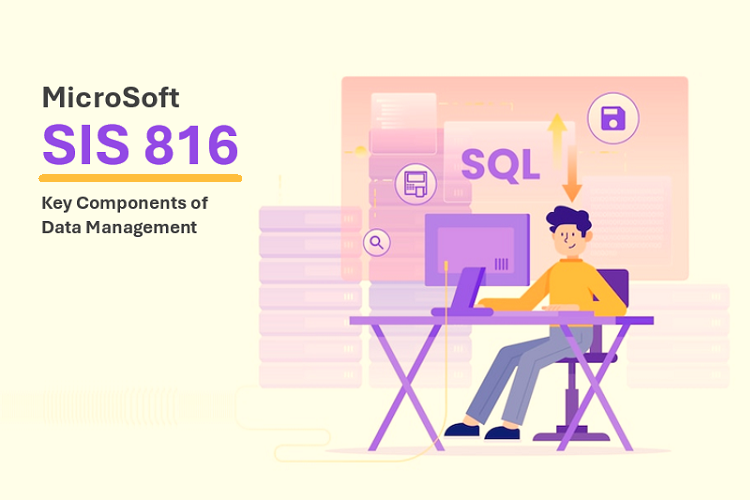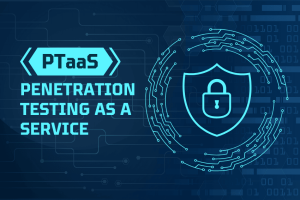SQL Server Integration Services (SSIS) 2016, or SSIS 816, is a significant data integration advancement. This article will take you through everything about SSIS or SQL Server Integration Services 816. Also, it gives the best practices and benefits of using it in various organizations. The paper also discusses some key features that make SSIS a game-changer. You will also get the details of SSIS beyond 2016 and its latest versions and advancements at the end.

What is SSIS?
Microsoft’s SQL Server database has a tool called SQL Server Integration Services, which we use for data integration. Its user-friendly graphical interface allows users to design and manage ETL processes well. In short, we can quickly move our data from any source to another using SSIS.
The tool automates data transformations and migration tasks. It reduces or completely eradicates coding, making it easier than ever. Businesses can utilize SSIS to combine data from various systems, rectifying any integrity issues during the collection period.
The most recent version, the SSIS 2022, brings advanced monitoring capabilities. It provides orchestration abilities and also supports big data workflows. But this article will focus on our superhero amongst all these versions, i.e., SSIS 816!
What does SSIS 816 mean?
SSIS 816 is a revolutionary product from Microsoft. It helps in managing, integrating, and transforming data from various sources.SSIS 816 serves as one of the key components of data management. It makes data-related tasks easier.
In addition to this, SSIS 816 streamlines the processes associated with handling data. Thus, businesses can effectively organize, manipulate, and handle their data resources.
Consequently, this superhero enhances productivity and promotes better decision-making. With the emergence of big data analytics enriched by science and mining techniques, SSIS 816 has become more important than ever before.
Why SSIS 2016 is SSIS 816?
Do you know what ‘816’ represents in the context of the SSIS version number? Let’s breakdown the number into two parts:
- The last digit represents the SQL Server release. Since it came along with SQL Server 2016, it is SSIS 2016. It also falls under the thirteenth SQL Server release category and is more formally known as version 13.x.
- Sometimes, Microsoft gives each SSIS version number an internal codename. The codename for version 13.x was “816”, or SSIS 816. The 8 also represents the inaugural year of SQL servers, i.e., 2008.
It can be confusing because there are two numbering systems: a regular version number and a codename. But remember that these are just different names for the same product, the SSIS 2016. As they progressed, however, Microsoft switched to a standard yearly versioning model for SSIS to simplify naming.
Features of SSIS 816
SSIS 816 makes moving and transforming data from various sources into destination databases or warehouses easy. Moreover, SSIS 816 is versatile when it comes to its capabilities. For example, it handles multiple data sources and destinations without glitches.
Additionally, it deals with relational databases plus flat files. In addition, it can process XML files and web services alongside cloud services. It supports multiple data formats very well. You get the best compatible and efficient data flow tool across various platforms.
The SSIS 816 can do data transformations. The SSIS system is suitable for sorting, filtering, aggregating, merging, splitting, pivoting, etc. It comes with advanced functionality for all types of complex data operations. Users can manipulate and manage their data as they need.
You can also access profiling, cleansing, matching, and standardization features supporting data quality and governance. These capabilities maintain high data quality standards by ensuring accuracy, consistency, and reliability among different datasets.
SSIS 816 streamlines data operations. The system excels in automating and scheduling ETL workflows. It monitors and troubleshoots ETL performance with a view to efficiency. SSIS 816 offers a comprehensive solution for all your data integration needs. Furthermore, it comes with features like managing ETL security and logging, which ensures seamless, secure processing of your organization’s information.
SSIS 816 as a Game-Changer
SSIS 816 was one of those developments that changed everything about SSIS slowly but surely over time. Several things make it a game-changer version. This article will examine some unique features that make this incredible tool different from others.
-
Modern Architecture
Architecture received significant updates in SSIS 2016. It improved scalability and performance. The modular architecture lets users easily handle complex data integration tasks. In contemporary business environments, it’s a great plus. SSIS 816 became the solid foundation for all future developments.
-
Easy Connect with Azure Data Services
SSIS 816 provides easy integration with Azure Data Services. It recognizes the growing prominence of cloud-based solutions. SSIS 816 bridged the gap between on-premises and cloud-based data. It allowed organizations to implement hybrid data integration quickly. We shall see more about this feature later.
-
Enhanced Security
The Always Encrypted and row-level security features of SSIS 816 address businesses’ data security needs. SSIS 2016 became a more secure platform. It is capable of handling sensitive data with the necessary safeguards.
-
Big Data Skills
SSIS 2016 embraced the era of big data. The tool provides enhanced connectivity to big data platforms. The ability to integrate and process data from diverse sources makes it great. The data sources include Hadoop, Azure Data Lake Store, and anything else. The SSIS 816 is a versatile tool for modern data ecosystems.
-
Incremental Package Deployment
The Incremental Package Deployment reorganizes the development and deployment lifecycle. Developers can now make changes to specific packages without redeploying the entire project. It reduces downtime and quickens the development process.
The Key Features That Made SSIS 816 Phenomenal Explained
Microsoft’s SSIS 816 is a powerful tool. It helps people manage data. Here are some key features that made it stand out to become a game-changer in data integration:
-
Shift to Azure: How did it Change Data Processing?
By supporting deployment to Azure, SSIS became cloud-friendly. It was a pivotal move as data continued shifting to cloud platforms. The SSIS Feature Pack for Azure is like an add-on. It gives SSIS more power. With this pack, SSIS can now talk to and work with Azure services like Azure Blob Storage. It can also connect with Azure HDInsight, Azure Data Lake Store, and Azure SQL Data Warehouse.
Imagine SSIS as a messenger and Azure services as different places it can go. With this feature pack, SSIS can now go to Azure Blob Storage and Azure Data Lake Store and connect with on-premises data sources. It’s like giving SSIS a key to open doors to Azure places.
What does SSIS do once it’s there? It helps move data around! It can take data from Azure Blob Storage, Azure Data Lake Store, or on-premises sources and move it to different places. It’s like a data mover between different storage areas.
Also, SSIS can work with Azure HDInsight, a special place where you can do more complex things with your data. So, SSIS, with this feature pack, is not just a messenger but also a helper in doing more advanced things with data in Azure.
-
Modernization of ETL
With its new features, SSIS 816 modernized and expanded the traditional ETL to support more diverse data integration scenarios. It went beyond batch loading of data warehouses. SSIS 2016 is like a superhero for handling data. It got a modern makeover to work even better. Now, it can quickly grab data from different places, change it as needed, and put it where it belongs.
Think of it as a superhero that can talk to the cloud, making it useful for today’s technology. Plus, it’s now good at handling a lot of data. It can even handle tons of information.
In 2024, we now understand how important this technology is. We have loads of data and will only see an increase in the coming years. So, we will need more advanced data processing tools to handle multiple data types and sources. And SSIS 816, the superhero, helped us walk tall through that transforming phase!
The superhero also learned new tricks to make it easier for people to use. It’s like giving it a cool new outfit that makes everything look simpler and more organized. And guess what? Like a robot, this superhero can do its job automatically, so you don’t have to do the same things repeatedly. It’s all about making data work smarter and better in today’s world.
-
Increased Enterprise Scalability
Node-scoped packages let SSIS handle larger enterprise ETL workloads. SSIS is no longer limited to smaller data loads. SSIS 2016, our data superhero, got a significant upgrade to handle more tasks simultaneously. Imagine it like giving our superhero a power boost to manage data for huge companies.
Now, it can deal with massive amounts of information without slowing down. It’s like our superhero became stronger. It can now help big businesses with lots and lots of data.
The increased enterprise scalability of SSIS 2016 means it can efficiently handle the data needs of large companies. It makes sure everything runs smoothly, no matter how much information there is to manage.
-
Flexibility and Relevance for Big Data
SSIS 816 has facilities like incremental package deployment. It makes SSIS deployment models closer to DevOps patterns. SSIS became more agile and friendly for changes. In simple words, SSIS 816, our data superhero, learned a cool new trick. It’s more flexible and makes upgrades easy and quick.
Imagine our superhero being good at playing together with others. It can easily fit into how teams create and update data integration tasks. It’s like our superhero became a team player. He makes it simpler for everyone involved in building and updating things with data.
The built-in connectors for platforms like Hadoop and Azure Data Lake Store strengthened SSIS’s capabilities for big data pipelines. SSIS 816, our data superhero, now deals with big data. Think of it like our superhero getting a particular skill to handle massive piles of information.
You can also picture it as our superhero has become a giant to carry and process lots and lots of data. It is super important because, in today’s world, we have gigantic amounts of information. SSIS 816 is like our superhero stepping up to manage it all. The tool is now fantastic at managing vast data in our digital world, making it a superhero tailored for our big data challenges.
SSIS 2016 made the platform relevant for more modern data integration needs. It adapted to the cloud and increased scalability. SSIS 816 supports more diverse data projects. It was a turning point that helped establish SSIS as an indispensable data integration tool.
Benefits of SSIS 816
SSIS 816 is the superhero of data management. It’s not just a tech tool; it’s the friend that makes data tasks a breeze. Here are a few incredible benefits that make SSIS 816 your go-to assistant in the digital world!
- Improved Performance: SSIS 816 brought significant performance improvements. It enables faster and more efficient ETL processes. The new engine architecture and data flow components improved the performance. It reduced latency and gave us parallel processing. The enhancements improved overall data integration performance.
- Incremental Package Deployment: One feature of SSIS 816 is incremental package deployment. It allows developers to deploy only the changes made to a package. In previous versions, we redeployed the entire project. It modernizes the deployment process and also reduces downtime.
- Always Encrypted Support: SSIS 2016 introduced support for Always Encrypted. The new feature enhances data security by encrypting sensitive data at rest and in transit. This added layer of protection is essential for organizations dealing with sensitive information.
- Row-Level Security: Another enhancement in SSIS 2016 was the row-level security for packages. This feature enabled developers to define security settings at the row level. It ensured that only authorized users could access specific rows of data within a package.
- Big Data Connectivity: SSIS 816 enhanced connectivity to big data platforms like Hadoop and Azure Data Lake Store. It allowed organizations to integrate and process data from diverse sources. The capabilities of SSIS to handle modern data landscapes improved significantly.
- Azure: SSIS 2016 brought cloud capabilities to SSIS. An optional add-on provided additional connectors for Azure services. We can now connect to Azure Blob Storage, Azure Data Lake Store, and Azure SQL DW. It allows hybrid data integration across on-premises and cloud environments. We have elaborated on it in the key features section. Incorporating Azure made our superhero a game-changer in the data processing industry.
- Scale-out Performance: The introduction of node-scoped packages increased scale-out performance. It helped distribute workloads across multiple nodes. Imagine having various helpers (nodes) working together. It makes data tasks faster and more efficient. This upgrade allows the workload to spread across these helpers. It is like teamwork, resulting in a superhero group boosting performance for larger, complex tasks.
In addition to the highlights mentioned above, SSIS 816 included general improvements. We got improved usability, debugging, error handling, logging, and configuration. The 2016 release made SSIS more cloud-ready. It introduced features to simplify workflows for moving and transforming data at scale.
Best Practices for SSIS 816
While you develop SSIS packages in the 2016 version, follow these recommended best practices:
- Parameters and Configurations: Define SSIS package configurations and settings via parameters. Never hardcode values in the package. It improves maintainability. SSIS 816 ensures you can make incremental changes. So, make use of the feature.
- Error Handling: Healthy error handling maintains data integrity and deals with troubleshooting issues. SSIS 816 provides features like event handlers and logging to capture and manage errors effectively. Establish a comprehensive error-handling strategy. It is essential for identifying and resolving issues promptly.
- Data Flow Optimization: Design an efficient data flow by minimizing unnecessary transformations. Use appropriate data types. Utilize the advanced data flow transformations available in SSIS 816. It helps to streamline the movement and transformation of data. You will also see the performance improve significantly.
- Parallel Processing: SSIS 816 supports parallel processing. It executes tasks and data flows concurrently. You should adequately configure parallelism and take advantage of the available resources. It enhances the overall performance of your ETL processes.
- Security: Enhance security if you deal with sensitive information like connection strings and passwords. Please use package protection levels and sensitive parameter values. So, all the confidential data is safe throughout the development, deployment, and execution phases.
- Configure Logging: To debug issues and monitor performance, set up robust logging at the control and data flow levels. Log key details like execution times and row counts.
- Data Flow Tuning Techniques: Data flows are the top optimization target. Learn techniques like increasing buffer sizes, tuning lookup caching, scaling out components, etc.
- Separate Environments: Have distinct SSIS catalogs and configuration settings for development, test, and production environments to avoid issues mixing or overwriting packages between environments.
- Use Transactions: Use transactions carefully in packages to avoid blocking and locking issues. Consider smaller transactions wherever possible.
- Don’t Overload Packages: Keep packages reasonably sized for efficiency. Break huge packages into separate workflows.
- Secure Credentials: You should store database connection credentials and other sensitive items in the catalog or Azure Key Vault. Never directly expose them in packages.
- Validate And Profile Data: Build validation checks in data flows. Profile data so it helps to identify issues like null values, duplicates, etc.
Following SQL Server and SSIS best practices help build reliable, optimized data integration processes that are easier to manage and enhance over time.
Evolution Beyond SSIS 816
While SSIS 2016 marked a significant advancement, Microsoft continued to refine and enhance the SSIS platform in subsequent releases. Staying well-informed of the latest versions is essential to leverage the most recent features and improvements.
SQL Server 2017
The release of SQL Server 2017 brought further enhancements to SSIS, including support for graph data, additional transformations, and improved connectivity options. Integrating Python, a popular data science programming language, expanded SSIS’s capabilities in handling advanced analytics scenarios. The key upgrades include:
- Scale-out groups for increased workload distribution
- Advanced caching for lookups and databases
- Support for Spark and Python extensions
SQL Server 2019
SQL Server 2019 continued the evolution of SSIS with notable features such as enhanced scale-out for the SSIS catalog, increased security features, and improved performance through Apache Spark and PolyBase. The integration of SSIS with Azure Data Factory facilitated a seamless transition to cloud-based data integration scenarios.
- Native ADF/ADLS connectivity and data flow.
- Data profiling enhancements
- GitHub integration
SQL Server 2022
The latest version available while we publish this article is SQL Server 2022, which builds upon the foundation laid by its predecessors. With a focus on performance, security, and integration with Azure services, SQL Server 2022 ensures that SSIS remains a pivotal component in the Microsoft Data Platform.
- Enhanced data flow debugging and monitoring
- Support for Delta Lake and Apache Kafka
- Visual authoring of machine learning workflows
SSIS’s core benefits and capabilities continue to advance with each subsequent release. SSIS 816 kicked off a new era of cloud and big data support that has expanded since its release. SSIS remains a strategic data integration platform today with its graphical ETL and enterprise-grade performance combination.
Final Thoughts
SQL Server Integration Services 2016, aptly nicknamed SSIS 816, stands as a testament to Microsoft’s commitment to providing a robust and evolving platform for data integration. Its benefits range from improved performance to enhanced security features.
These unique abilities make it a preferred choice for organizations grappling with the complexities of modern data environments. As the SSIS platform continues to evolve in subsequent releases, staying informed about the latest features and best practices becomes imperative for data professionals aiming to harness the full potential of this indispensable tool.
SSIS remains a cornerstone in data integration, empowering organizations to extract actionable insights from their ever-expanding datasets, whether in on-premises or hybrid cloud scenarios.


